Marijuana prohibition is a house of straw. During the past month, the winds of change have started to rip that house apart and now the DEA may be reevaluating cannabis’ status as a ‘dangerous drug.’

In a perfect storm for prohibition, the “house of straw” — the credibility of anti-marijuana lies — is the first to fall. Image from uni-paderborn.de.
Part 1: House of Straw
America’s long-running and expensive “War on Drugs,” despite claims that it protects citizens from the harms of dangerously addictive drugs, has been most aggressively focused on cannabis (marijuana, hemp; Cannabis sativa).
Cannabis is not physically addictive and has been consumed by humans for thousands of years without any documented deaths from its use alone. To even begin to catalog the harms of prohibition itself would take a book and cannot be undertaken seriously until the war is over.
Cannabis is one of the most variable members of the plant kingdom, capable of expressing many attributes depending on genetics and nurture. Strains of cannabis (hemp) that provided fiber for sails and rope during the American Revolution did not have any psychoactive effects. Until the mid-1930s, cannabis was grown in the U.S. as hemp, primarily for its valuable fiber, but also for its edible, energy-rich seed oil.
Other strains (marijuana, ganja, reefer, etc.), long known in Asia and Africa and imported to the West by Queen Victoria of England’s physician, among others, do have such effects and are valued as medicine and as social lubricants less volatile than alcohol.
Recent years have seen a shift in public attitudes about marijuana as profound as that accompanying prohibition’s advent.
Recent years have seen a shift in public attitudes about marijuana as profound as that accompanying prohibition’s advent, when corporate-funded propaganda like the infamous Reefer Madness film filled viewers with terror, resulting in the destruction of increasingly competitive hemp industry and agriculture. The war against marijuana has been exported around the world at U.S. insistence; again, to catalog the harms of these policies may take years. The tide of world opinion turned against prohibition long ago.
But as of today, in the U.S., twenty-three-and-climbing states plus the District of Colombia (D.C.) have legalized some level of medical marijuana use. Florida voters reportedly favor wider uses of medipot there, up for approval in November, by a 90% margin. New reports of marijuana’s usefulness in various illnesses appear in peer-reviewed scientific journals almost every month.
Colorado and Washington state each legalized recreational use and commerce at the ballot box last year; Alaska is widely expected to do so this November. And, perhaps significantly, the City Council of Washington, D.C., passed a bill decriminalizing possession of small amounts of marijuana there, now pending approval by Congress. (DC residents do not enjoy full home rule.)
Marijuana prohibition, built out of lies and fear, is a house of straw. Winds of reason are blowing hard against it now. What’s motivating the changes and who stands to benefit most?
What about the children?
In a very real sense, the shift in public opinion is generational. Today’s Internet-savvy, internationally aware younger generations seem less likely to accept any old canards uncritically. They see for themselves that prohibition is harmful, cannabis is at worst no worse than alcohol, and that costs of an increasingly tech-ified drug war will fall most heavily on them. But it’s not only young folks who don’t respect the official position on marijuana anymore. Increasingly their parents and grandparents are seeing the light.
Anti-drug warriors for years have staved off liberalization attempts with the cry, “What about the children??” Now whole families are saying they prefer liberty over nannies and natural medicine over synthetic drugs.
Several Colorado youngsters with severe seizure disorders who benefit from using certain strains of cannabis were highlighted in three televised specials featuring Dr. Sanjay Gupta that aired in August 2013 and in March 2014 on CNN. (Find them here, here, and here.)
These programs generated a tsunami of sympathy for kids like 3-year-old Charlotte Figi and her parents, and demands for action from families of similar children in other states.
Gupta’s previous skepticism about medical marijuana led him, in the first of these specials, to apologize to his viewers, who generally regard his opinions with something approaching reverence. And he makes no bones about the fact that his former opposition stemmed in part from government lies.
Gupta was nominated to be U.S. Surgeon General in President Barack Obama’s first administration but chose to maintain his neurosurgical practice and television career; still, he is close to the President.
“What about the children?” Cannabis medicines will help some of them live normal lives.
So the writing may be on the wall.
So the writing may be on the wall. During the past month, especially, the winds of change have really started to rip the house of straw apart, specifically in regard to the federal Drug Enforcement Administration (DEA). The DEA is charged with enforcing the provisions of the Controlled Substances Act (CSA). As the agency explains,
Drugs, substances, and certain chemicals used to make drugs [are to be] classified into… distinct categories or schedules depending upon the drug’s acceptable medical use and… abuse or dependency potential. The abuse rate is a determinate factor in the scheduling of the drug; for example, Schedule I drugs are considered the most dangerous class of drugs with a high potential for abuse and potentially severe psychological and/or physical dependence. As the drug schedule changes — Schedule II, Schedule III, etc., so does the abuse potential — Schedule V drugs represents (sic) the least potential for abuse.
The DEA further says that its mission is
to enforce the controlled substances laws and regulations of the United States and bring to the criminal and civil justice system of the United States, or any other competent jurisdiction, those organizations and principal members of organizations, involved in the growing, manufacture, or distribution of controlled substances appearing in or destined for illicit traffic in the United States…
In other words, the agency is both judge and prosecutor where “drugs, substances, and certain chemicals” are concerned. The DEA determines drug scheduling upon recommendation from the Food and Drug Administration (FDA), but isn’t bound to follow the FDA’s advice. Cannabis was placed in Schedule I when the CSA was passed, during the Nixon Administration, and has stayed there despite three substantial scientist- and advocacy group-initiated efforts to reduce its scheduling.
The DEA has throughout its existence concentrated more on the enforcement side of its mission and less on the scientific objectivity and analysis. Cannabis activists have long seen it as the main roadblock to decriminalizing marijuana here and abroad.
Then, over the Summer Solstice weekend (June 21-22), the blogosphere began to throb to a report by Anna Edney in Bloomberg News that the DEA had asked the FDA to reopen an inquiry into cannabis’ “dangerous drug” status, and that the FDA had agreed. The inquiry was revealed by Douglas Throckmorton, FDA Deputy Director for Regulatory Programs, at a congressional hearing. Edney commented, “A change in schedule could help reconcile some of the differences between federal laws and looser state laws.”
The hearing in question was one of several being held by the House Oversight and Government Reform Subcommittee on Government Operations on that DC Council vote to decriminalize marijuana possession in the city, bringing penalties for an ounce or less to $25.00. Subcommittee Chairman Rep. John Mica (R-FL) had earlier expressed skepticism about the change.
The testimony the subcommittee has heard is finding responsive listeners.
But according to Allen St. Pierre, Executive Director of the National Organization for the Reform of Marijuana Laws (NORML), the testimony the subcommittee has heard is finding responsive listeners. Mica has been running a fairly loose ship — he showed up at an early-on hearing flourishing a fake marijuana joint — allowing members, who’ve been hearing from their constituents ever since Dr. Gupta’s marijuana specials aired, to stray far from DC decrim.
It came to a head with committee members asking DEA representatives, as paraphrased by St. Pierre, “Is marijuana a medicine or not? And if it is, why isn’t its scheduling coming down?” and demanding, “Give me something I can tell my constituents to explain why they can’t have this medicine for their sick children, or make a change!”
Since then the FDA has posted several new web pages; the most notable, titled “FDA and Marijuana,” attempts to outline appropriate procedures for gaining approval for cannabis-based products; we’ll get back to that.
There goes the money
The congressional confrontation was just the last straw prompting the DEA request for a reevaluation of cannabis’ status. Some activists started cautiously celebrating on May 29, when the House of Representatives voted to cut DEA funding for medical marijuana raids in states where it is legal. According to Michael Roberts in Denver Westword, “The vote came in conjunction with H.R. 4660, a massive appropriations bill for the Departments of Commerce, Justice, Science and Related Agencies for the fiscal year ending September 15, 2015,” on an amendment proposed by California Republican Dana Rohrabacher.
Hopes that Senate approval of the Rohrabacher Amendment, jointly sponsored by Kentucky Republican Rand Paul and New Jersey Democrat Cory Booker, would swiftly follow had somewhat faltered by June 23. Roberts reported then that the delay is due to disputes over the overall appropriations bill rather than any disagreement with defunding the raids.
Then on June 17, a new report, The DEA: Four Decades of Impeding And Rejecting Science, issued by the highly-respected Drug Policy Alliance (DPA) and Multidisciplinary Association for Psychedelic Studies (MAPS), concluded that the DEA has ignored and hampered scientific investigation, failed to act in a timely manner on petitions to remove cannabis from Schedule I, and in general has acted as a police and propaganda agency, unfit to rule on scientific research and medical practice.
The DPA/MAPS report argues that, while the DEA has said for years that there is insufficient evidence to change cannabis’ scheduling, it has also (along with the National Institute of Drug Abuse [NIDA]) blocked and denied legitimate research proposals:
The DEA’s most common tactics include: Failing to act in a timely fashion. The DEA took 16 years to issue a final decision to the first marijuana rescheduling petition, five years for the second, and nine years for the third. In two of the three cases, it took multiple lawsuits to force the agency to act. Similarly, in the case of a researcher seeking an independent supply of marijuana [approved U.S. cannabis researchers are required to use only low-grade government-grown ganja] for research purposes, it took the DEA 12 years — and another lawsuit — to deny the request.
Still more bad news for the drug agency was on the way.
Still more bad news for the drug agency was on the way. On June 19, Ryan Devereaux, Glenn Greenwald, and Laura Poitras reported in The Intercept that the National Security Agency (NSA), according to whistleblower Edward Snowden, “used access legally obtained in cooperation with the U.S. Drug Enforcement Administration to open a backdoor to [the Bahamas] cellular telephone network, enabling it to covertly record and store the ‘full-take audio’ of every mobile call made to, from and within the [country] — and to replay those calls for up to a month.”
The Intercept continued:
(T)he program is a serious — and perhaps illegal — abuse of the access to international phone networks that other countries willingly grant the United States for legitimate law-enforcement surveillance. If the NSA is using the Drug Enforcement Administration’s relationship to the Bahamas as a cover for secretly recording the entire country’s mobile phone calls, it could imperil the longstanding tradition of international law enforcement cooperation that the United States enjoys with its allies…
The DEA has long been in a unique position to help the NSA gain backdoor access to foreign phone networks. “DEA has close relationships with foreign government counterparts and vetted foreign partners,” the manager of the NSA’s drug-war efforts reported in a 2004 memo. Indeed, with more than 80 international offices, the DEA is one of the most widely deployed U.S. agencies around the globe.
But what many foreign governments fail to realize is that U.S. drug agents don’t confine themselves to simply fighting narcotics traffickers.
DEA is actually one of the biggest spy operations there is,” says Finn Selander, a former DEA special agent…”Our mandate is not just drugs. We collect intelligence.”
Selander added that “countries let us in because they don’t view us, really, as a spy organization.”
This is potentially a breach of international trust even bigger than the one last year when it was revealed that the NSA recorded the private phone calls of heads of state of friendly nations, like Brazil’s President Dilma Rousseff. Serving as a cat’s-paw for the increasingly discredited spy agency wins the DEA no friends abroad or on Capitol Hill.
Here comes the future, folks!
Adding to pressure for change for the past several years has been the desire of GW Pharmaceuticals (GWP) of the UK to conduct U.S. trials on their acclaimed cannabis medicine, Sativex®, already approved in over 20 countries. Sativex, a whole-herb extract from a proprietary cannabis strain with balanced tetrahydrocannabinol (THC) and cannabidiol (CBD) content (the two main active compounds in marijuana; over 60 have been identified), is standardized so that each batch and dose is the same, and taken via an under-the-tongue spray. Repeated studies have found it beneficial in preventing or reducing spasticity and other symptoms of multiple sclerosis.
Unlike Marinol™ and other synthetic cannabinoid drugs, or even a one-compound plant extract, Sativex as a whole-plant product unavoidably challenges the Schedule I classification of cannabis at a basic level.
GWP has several other drugs “in the pipeline, “according to its website, and has already achieved FDA “Orphan Drug” status for its Epidiolex®, a liquid formulation of highly purified CBD extract, as a treatment for various pediatric epilepsy syndromes, including Dravet and Lennox-Gastaut syndromes; the same rare conditions highlighted in Sanjay Gupta’s CNN specials and of such concern to families of affected children everywhere.
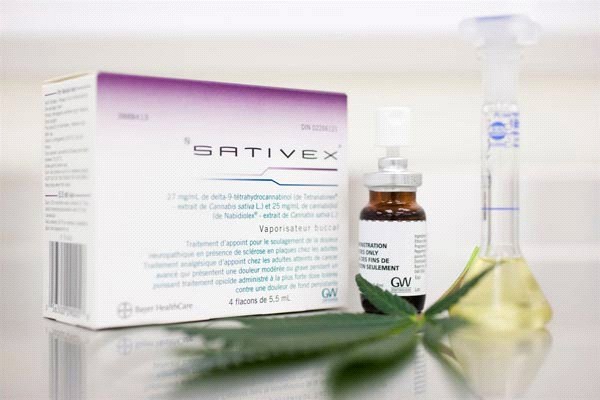
Sativex helps control spasms and other symptoms of multiple sclerosis and may be useful in other chronic, difficult-to-manage diseases. Its balanced therapeutic compounds prevent undue intoxication.
In an interesting development, again going back to Dr. Gupta and the epileptic children of Colorado, 13 states have adopted “CBD-only” provisions for cannabis products intended to be used with a vaporizer. Apparently these refer at present to products from one Colorado supplier, growers of the now-famous “Charlotte’s Web” strain. Yet according to that FDA website mentioned earlier and last updated on June 20, “The FDA has not approved marijuana as a safe and effective drug for any indication… the FDA has not approved any drug product containing or derived from botanical marijuana…”
While ‘Orphan Drug’ status isn’t, technically, ‘approval,’ this seems at best disingenuous.
While “Orphan Drug” status isn’t, technically, “approval,” this seems at best disingenuous, and places stated federal policy and established procedures even further at odds with actions states are taking on their own that seem based more on emotion than science.
As NORML Deputy Director Jon Armentaro wrote recently in Cannabis Now Magazine ,
For longtime marijuana law reformers, the ongoing political conversation surrounding CBD is instructive. It makes it clear that many politicians’ public opposition to the idea of patients using marijuana therapeutically isn’t because of supposed unanswered questions surrounding the plant’s safety or efficacy. Rather, it is because lawmakers oppose the idea of some people getting high from a naturally growing herb. (The fact that patients can get equally high or even higher from FDA-approved synthetic THC has, for whatever reason, never been an expressed concern of either lawmakers or prohibitionists.)
After all, the very same politicians who argue that marijuana isn’t medicine because it hasn’t been approved by the FDA or who allege that the substance hasn’t yet been subjected to sufficient scientific scrutiny utter no such public objections to the idea of legalizing patient access to CBD — a schedule I compound that hasn’t been reviewed, much less approved by the FDA, and that has been clinically studied far less than cannabis.
Now, anything on the DEA schedule, I-V, can be “illegal” under certain circumstances. It’s based on the Controlled Substance Act, remember! Schedule I drugs can’t be legally prescribed; II-V must be prescribed by a doctor. So GW Pharm may be pleased with any change in cannabis’ status that will allow it to enter the profitable U.S. market.
However, medical marijuana consumers will not likely be satisfied. Since Sativex is, again, a whole-plant extract, it doesn’t differ in any inherent sense from what one might grow or purchase in whole-plant form without a note from Doctor.
A solution is possible only if there’s a problem
Philly.com’s The Street highlighted a rather startling proposal in the scheduling debate on June 26:
“The safety and medical efficacy of marijuana are long-established, and the FDA has previously approved specific studies that the DEA later denied,” [Morgan] Fox [of the Marijuana Policy Project] said. “The time has come to remove marijuana from the Controlled Substances Act scheduling system altogether so that states can determine their own policies and research approval can be left in the hands of agencies dedicated to science, not criminal justice.” [emphasis added]
Whoa there — remove marijuana from the CSA schedule altogether?? Be still my heart! Of course I’d like to see cannabis designated “Generally Accepted As Safe”; after all, it is “grass”!
Logically, it should be treated as an herbal product subject to the Dietary Supplement Health Education Act of ’96 (DSHEA). If it were, commercial cannabis preparations would be required to use Good Manufacturing Practices (GMP), sharply limit label and advertising claims, accurately label contents, and not adulterate products in any way, including by “enriching” them with added ingredients. Importantly, such regulation would not discriminate between medical and recreational use but would protect all consumers.
Today a wide variety of completely unregulated cannabis products are available in several states. Many of these are NOT accurately labeled and may prove dangerous in certain conditions. There have been reports of two recent cannabis-related fatalities in Colorado. Inexperienced cannabis users ingested products made with “cannabis oil” and apparently believed they could fly, falling to their deaths.
‘Cannabis oil’ is a term that is being used very loosely.
“Cannabis oil” is a term that is being used very loosely. Scientifically speaking, “oil of cannabis,” or “essential oil” of any seed-bearing plant, is the seed oil; in the case of cannabis, completely non-psychoactive hempseed oil is a terrific food, put it on salad! (See my recent book, HEMPSEED FOOD: The REAL Secret Ingredient for Health & Happiness, to learn more!)
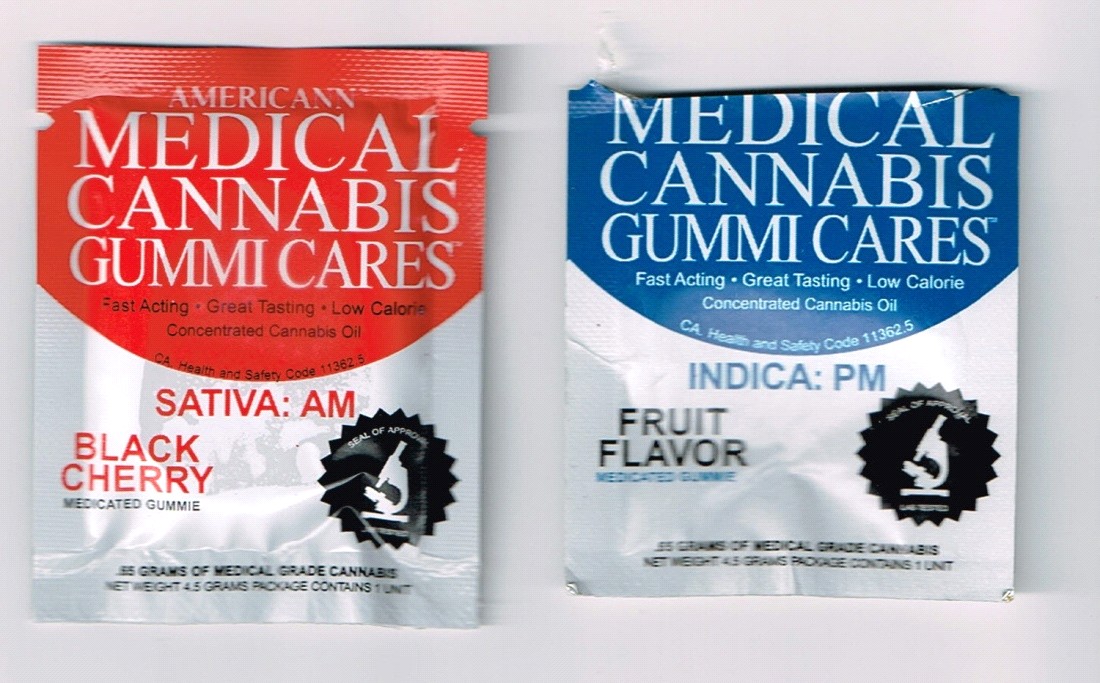
One of many widely-available medical cannabis products. Note the claim of “concentrated cannabis oil.” “1 Unit” may contain any amount of cannabis’ psychoactive compounds.
Undefined “cannabis oil,” aka “hash oil,” is being ingested in “medical edibles” and “vaped” widely (Austin TX cops, btw, are said to be “on the look-out” for people smoking e-cigarettes while driving; suspecting that many are using “cannabis oil”). While one could hope the stuff is being trampled out of juicy, resinous flower heads by bare-footed hippies in giant vats, like grapes for wine, that does not seem to be the case. This stuff is not much kin to the traditional pressed hashish of Morocco, Afghanistan, and India!
One type, butane honey oil (BHO), extracted with butane, may have dioxin residue; another, “cleaner” extraction process is reportedly available. But some people might say they’re using the cleaner process when they’re really using butane… “Cannabis oil” is meant to be psychoactive, but its strength and purity are anyone’s guess. The DIY process looks pretty easy, too, with lots of YouTube videos, and dangerous as all get-out; whole episodes of Jackass could probably be culled from manufacturing bloopers. Ka-Boom!
Unfortunately, this criticism applies to the non-psychoactive “CBD-only” extracts approved by 13 states so far for use by children as well as to recreational products; there is no approved standard for extraction methods, dosage preparation, etc.
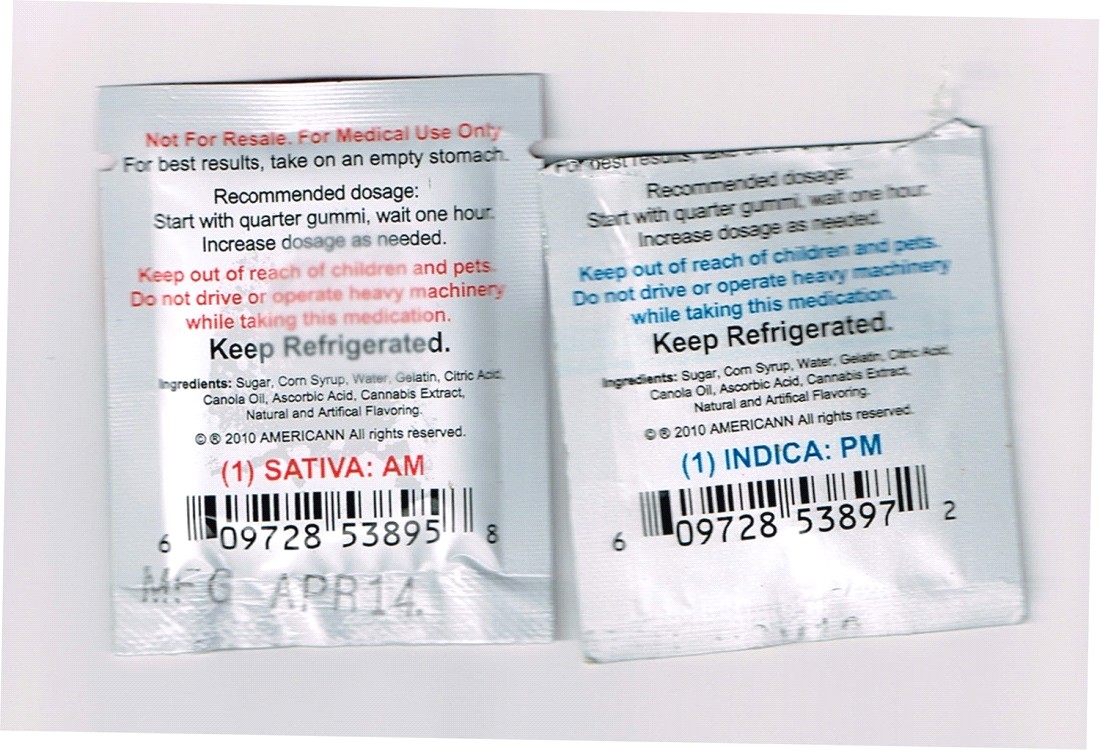
Back of Gummi Cares packets. Packaging would have to meet other requirements if products were regulated as dietary supplements. This particular product seems to be consistently and ethically produced – but who can know?
A related issue is that idiots with chemistry sets keep making and selling “synthetic marijuana”; most recently, Texas’ Gas Pipe “head shops” have run afoul of laws prohibiting these products. Interestingly, the DEA moved plenty fast to ban “Spice” and “K-2” when they became popular; no delays there! And people FLOCK to buy these mystery chemicals — they’re just a few molecules “off” from THC — at outrageous prices precisely because the real thing is illegal and they’ve heard (wrongly!) that cannabinoid analogs won’t show up on urine tests at work!
These, and potentially other types of unregulated medical products, can be dangerous.
These, and potentially other types of unregulated medical products, can be dangerous; one only has to think back to early days of the modern dietary supplement industry to recall why DSHEA was both desirable and necessary for a maturing industry, although its reforms have been slow due to FDA neglect. Not all manufacturers are ethical. Not everyone who participates in producing a product is primarily motivated by consumer welfare. The world is changing, but it is not yet Eden!
Note that regulation under DSHEA would not affect home gardeners growing their own cannabis any more than regulation of standardized garlic product prohibits growing your own garlic, or even selling it at the farmer’s market! DSHEA applies to processed commercial products, not home-grown produce.
It’s not over til it’s over
The wheels of government grind slowly and it may be months before re- or descheduling hearings are held, but experienced Washington observers expect action while President Barack Obama is still in office. Agency redirection at the level seen now at the DEA comes only from the highest levels. For Obama, cannabis rescheduling would harmonize the stated goals of allowing states to decide more such matters and reducing unnecessary government expenditures, at the same time making nice-nice with a supportive pharmaceutical industry eager to cash in on marijuana’s medical uses.
While most national advocacy organizations can be expected to seize the opportunity to mount a full frontal assault on cannabis’ current Schedule I designation, Rag Blog contributing editor and noted marijuana journalist Jonah Raskin sees rescheduling from a more relaxed California perspective, commenting in an e-mail,
Long overdue and in some ways irrelevant given medical marijuana in more than a dozen states and the booming marijuana industry in Colorado and Washington.
Millions of Americans ceased long ago to recognize and abide by those outmoded schedules of drugs; as obsolete as Nixon and his war on drugs — and hundreds of doctors — maybe thousands — have made their own schedules and put cannabis on the top of the list for herbs that are medicinal.
Still, I am all in favor of rescheduling; it will further legitimize medical marijuana, I hope.
Other issues that may affect discussion of re- or descheduling include defining the difference between medical and recreational cannabis use, defining standards for prescribing cannabis, and taxation. Where medical marijuana use of some sort has been approved to date, it’s the only medical product subject to taxation. Colorado is addressing this in its dual medical-adult use-environment with lower prices for medical goods than recreational products. Although supported by advocates to gain approval of medical cannabis use, such taxation is clearly discriminatory. Again, coming under DSHEA would resolve these issues: herbal products do not need prescriptions, are not usually covered by insurance, and are taxed like other consumer goods.
Just to be clear, I’ve ingested my share of untested chemicals; in some ways, our lives are an ongoing chemistry experiment. The long-drawn-out nitpicking dicing-and-slicing of compounds from, and specific uses of, a plant that promotes unity is frustrating. But unless and until cannabis is accurately characterized, abuses on both sides of the law are bound to continue, at an ever-increasing social cost.
Future posts in this series will discuss other lingering issues with which the drug war has saddled us. Watch for “House of Sticks” and “House of Bricks” on The Rag Blog.
Read more of Mariann Wizard’s writing on The Rag Blog.
[Mariann Garner-Wizard, a Sixties radical activist and contributor to The Rag, Austin’s underground newspaper (1966-1977), is a poet, a professional science writer specializing in natural health therapies, and a Rag Blog contributing editor. ]

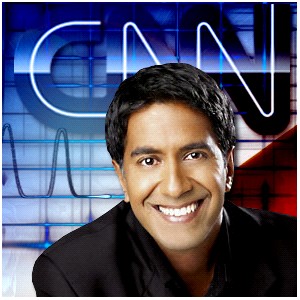
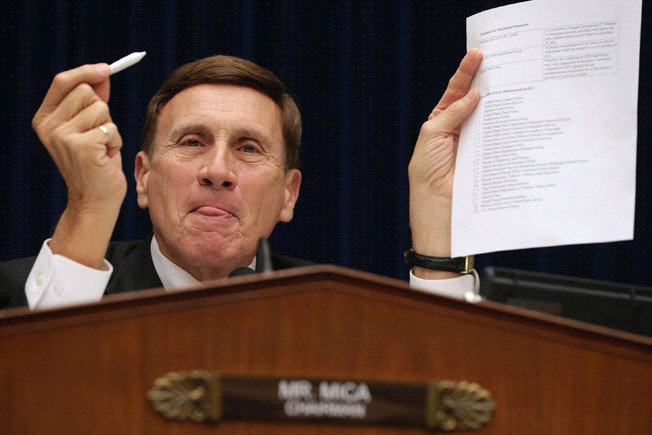
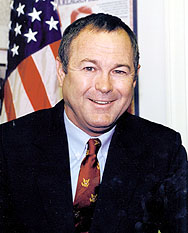



















Good, thorough, comprehensive article with up-to-date information and forecasts about the future of cannabis. I look forward to the upcoming articles in the series. Thanks.
I suspect medical marijuana is hyped way out of proportion. I also agree with the right wingers that it is only a way to get the camel’s nose under the tent of full legalization. But there we part company.
Never have I seen a bit of a problem getting stoned with my friends. The regime has no business using prohibition to foster the police state whose real use is to guard the imperial business of the corporate state.
Thus legalization attacks the ostensible reason for this police state which controls our every move, forcing into the open the real reasons for its existence.
Thanks, Marian, for the cohesive update. As you say, we have miles to go but I am energized by the progress so far.
Still, I remember I live in a particularly backward state, so no telling how long before Texas catches up. Meanwhile, perhaps these events will inspire changes in current medical pain management laws here which currently prohibit any person who suffers from chronic pain to obtain pain relief medication from a doctor without peeing in a cup to prove they have no THC in their system. Barbaric and hypocritical situation whereby the local medical professional perpetuates narcotic addiction in the name of saving us all from the evils of cannabis.
Looking forward to next installments.
Excellent work, Mariann!
The current strategy of using NSA-collected data to serve as a basis for a stop and search scenario, with the later-claimed cause of the stop being fabricated to cover up the issue of illegally used intel, is a serious faux pas and blatant breech of the 4th Amendment, unless one can seriously, with a straight face, define several lbs of weed as a ‘National Security issue.” And if the fibbies, et al., can do -that- with a straight face, then “I want some of what ever they’re smoking”…..” to use an outdated cliché’.
In the first couple of paragraphs, I came to a puzzlement, however. I was taught that even with hemp-grade sativas (those plants registering less than 1% THC content), there exists an issue involving natural selection which permits approximately 1:100 such plants to have a higher measurable THC content. It’s been rumored that this factored into the original GW (George Washington) purportedly finding satisfaction in sampling “select flowers” in his hemp fields.
The issue of re-scheduling, versus de-scheduling is important, too. While regulations under FDA guidelines, etc., could provide for some degree of safe-guarding re. content, pesticides, types of fertilizers utilized, molds, etc., and even OSHA might address issues such as exposure to pathogens in fertilizers, excess ozone in areas where people and critters reside, etc., -none- of that mandates any necessary relationship with the 1970 CSA,. other than for the fact that Nixon hated Abby Hoffman and Jerry Ruben, and “by God, someone must pay!!”,
The concept of ‘age-of-,majority’ as the threshold at which persons become permitted legally to get goofy or relaxed, depending, is a well-accepted concept in our communities. But such protections or barriers can also be achieved without any relationship to federal definitions and law enforcement,
The ruse that “it’s for the children,” is shredded and discarded by and for anyone with personal knowledge of full-blown SWAT-style raids on pot growers who happened to have (sometimes very-well-cared-for)
children in their lives, and a child’s experience with waking to handguns and class III select-fire weapons in their faces at 3:00 A.M. I can guarantee you -that- ain’t “for the children”!!
I would also assert that there’s a wide-ranging continuum of ethics adherence among clinics providing ‘medicine.’ There are those who take the differentiation between medical use and recreational use very seriously, and those who tread into fallacy, who with a wink and a nod, provide cannabis (in theory, as medicine) for the least pretend malady, and sometimes without much attention to age of recipient, laughing all the way to the bank.
While I personally believe that persons should be able to treat their bodies however they wish, if for no other reason than sole proprietorship over one’s own flesh, dabbling into the whole right-wing and Libertarian property rights issue, I also believe that those who do business with less-than-sincere dedication to such ethics marginalize the legitimacy of marijuana as medicine by tainting it with capital-driven recreational dealing, all the while continuing the winking and nodding. Those folks, however nice and otherwise decent as people go, do a serious disservice to those who take their vending of medicine for the ill more seriously.
What this Country endures more than a drug problem, is a Nationalist Ego problem, contributing directly to a perception and awareness problem, leading directly to a police problem.
Any entity that can wipe away conscience for acts as egregious as pointing an automatic weapon into the face of a pre-adolescent child at 3:00 A.M., in the darkness and sanctuary of their bedroom, dismissing such outrageous acts of terror by defining them as being in defense of God and Country, simply because that child’s parent happens to be a successful horticulturist, albeit of a non-conventional variety, is nothing shy of a blatant sociopath who has clearly forgotten the Nuremburg trials and the lessons learned therein. Claiming to have been under orders is not sufficient cause to forget one’s relationship to the greater whole of humanity, the reciprocal nature of compassion in the Cosmos, and karma.
To arm such beings with qualified immunity, badges, and the unprosecuted de facto right to lie under oath, regardless of the cultivated levels of fear in the greater populace, leads straight to the squashing of freedom, and the abrupt rise of fascism/totalitarianism in a country so tied up in its delusions, that it often can’t even fathom quite how far it’s slipped.
We’ve been locking up some of the wrong people, and letting those walk who -should’ve- been incarcerated, for decades now…. Maybe even centuries.
Which is precisely why I’m at home on this fine holiday, rather than engaging in the epitome of hypocrisy, waving flags with my family, and chanting outdated/stale mantras about freedom and liberty in a Land that sports the largest prison population in the World, with 50% + of those prisoners in federal institutions being drug war prisoners, and the same for 26% or so of those in state pens being products of the same dimwitted systemic approach to alternative vices.
But there’s a HUGE raspberry creme meringue pie here (made from our raspberry concentrated extract from last year’s berries) with a whole wheat crust, sweetened with honey instead of sugar, so I can eat it. And I plan to do exactly that while my family is away waving flags. ;^>)
And again, overall, -very- good work, Mariann! Thanks!
A great analysis of the war against people by our own government over an herbal medicine. We can help to end this prohibition in our lifetime (yes, be still my heart!). Herbal answers to many health related issues have been kept from those it would benefit the most. Keep up the good fight!
Hot diggity!! Great article. I am going to share the link on a few green sites.
Another hot diggity for some very good replies.
for some very good replies.
Dirks post, where he mentions national hypocrisy, is very sadly all too correct these days. To me it’s a sad day to have to agree that the US govt has a less than stellar record when it comes to setting a good international example. I wish that were not true, but…it is.
What other nation wants to emulate US when our ‘leaders’ talk freedom, but work to stifle it at home? Our national leaders need to walk the talk regarding freedom & liberty. Exporting the lost, prohibitively expensive & more deadly than the prohibited substances war on some drugs was one of the worst moves ever made by DC.
All the lives lost & ruined… so much money down the toilet…such a horrendous waste. All because some newspaper magnate was worried about his big $$ stash…
Greed & the lust for power are the truly dangerous drugs. I could get behind prohibiting them.
SamFox
Great article! Let’s all raise a joint to Mariann.